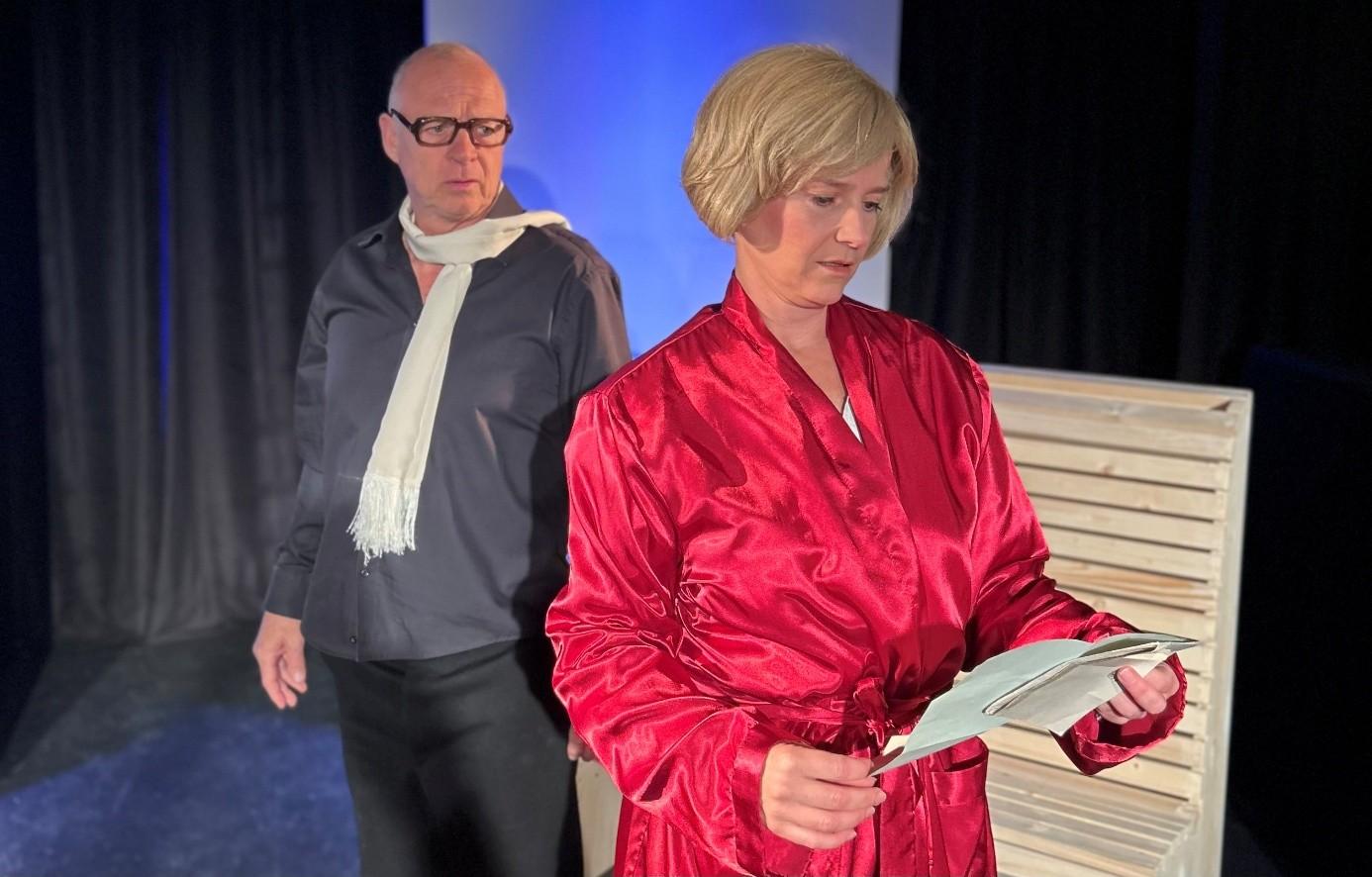The small district of Schnoor in the northern German city of Bremen, consisting of some 100 houses, has had a long history. First mentioned in the 13th century, the oldest parts of extant buildings go back to the 14th century. Originally, the district was inhabited by river fishermen, craftsmen and tradespeople. After a time as a deprived area for the poor at the beginning of the 20th century, the district was restored and has become an attraction as a cultural and culinary quarter for tourists and locals alike. Because the streets are so narrow, the area is car-free. Part of this quarter is the Packhaustheater. The building goes back to 1801, and in 1976 the current new build was erected, in line with the district’s architecture. This was an initiative led by Günter Huster (1912-1987), who had founded a chamber theatre in Bremen in 1947 (Zimmertheater). After several shifts of ownership and management teams, the theatre’s future was uncertain after the Corona pandemic.
Earlier this year, the management of the Metropoltheater in Bremen, a large-scale theatre predominantly for touring productions with 1451 seats, built in 1999, has taken on the management of the Packhaustheater. Dirk Böhling (b. 1964) was named as its new artistic director. He has made a name for himself locally and beyond as an actor on stage (most recently he played Professor Higgins in a production of My Fair Lady at the municipal theatre in Bremerhaven) and for television (frequent appearances as main or subsidiary character in TV series episodes), as a director, and as a dramatist. To many he is also known as a regular speaker / presenter on local radio (Bremen Eins). Böhling stated as his artistic agenda to focus on events and personalities from Bremen. “Bremen” here refers to the federal state of Bremen, which comprises the cities of Bremen and Bremerhaven (some 35 miles north of Bremen).
Thus, the production that has now launched the new era of the Packhaustheater, after some prior work to the interior and the auditorium of some 140 seats, was Lale Lili Marleen: Das Leben der Lale Andersen – Eine Femmage. The play was written and directed by Böhling. It is about actress and singer Liese-Lotte Helene Berta Bunnenberg (1905-1972), who became famous under the name Lale Andersen. She was born and grew up in Bremerhaven, leaving her husband and three children to pursue her career in Berlin; she achieved world-wide fame particularly with the song Lili Marleen.
The play was premiered in 2018 at piccolo teatro Haventheater in Bremerhaven, in a production under Böhling’s direction. Frank Imsiepen recreated the set for this current production from his original design: a number of free-standing white walls became demarcations of spaces and projection screens for specific interiors and exteriors, for landscapes moving past as seen through train windows, or atmospheric colours. Within the space, a larger and a smaller wooden slatted frame seat served as seats and, turned upside down, or on their sides, combined with the wall elements, turned into bomb shelters or other objects as needed by the plot. The set was thus simple and functional; the shape of the seats and the projections added an element of endearing design poetry.
The play started and ended with a scene in a bomb shelter: characters hummed Lili Marleen, and a woman read a letter from her husband from the war front, pointing out that it was this song that kept his and his fellow-soldiers’ spirits alive under the brutal conditions of war. The letter also narrates a striking incident where enemy soldiers joined the singing for a while, uniting enemies at least temporarily. Episodes, interspersed with Lale Andersen songs, provided a survey of her life, covering, among others, a moment on the train journey to Berlin after she had left her family in Bremerhaven, her encounters with the men who became important in her career, including Hans Leip, who wrote the original text for the famous song, and Norbert Schultze, who composed the tune, and Hans Hinkel, who was a leading official in the Nazi government, in charge of clearing German cultural life of Jews.
The play was cleverly written, with just the right mix of the ingredients of factual information about its characters, song and music, moving moments, excitement and nostalgia, all in appropriate measure and neatly juxtaposed.
Böhling selected a very capable cast for this production. Sabine Urban had already shared the role of Lale with Erika Spalke back in 2018. She skilfully brought out the full range of nuances of the character to equal measure: the vulnerable young woman who had just left her family to pursue her career in Berlin, the artist seeking to develop her profile, and the vulnerable individual who did not sacrifice her dignity when subjected to the whims of the totalitarian regime and its nasty representatives. She was equally good at singing the songs.
In the 2018 production, all the male characters were played by Roberto Widmer, who was then artistic director of piccolo teatro Haventheater in Bremerhaven. For this production, they were played by Guido Fuchs, who had co-founded the piccolo teatro Haventheater with Widmer back in 2011. Fuchs was very good at differentiating his seven plus characters, developing a distinct and specific set of body posture, accents and other vocal features for each of them. He was likeably clumsy for the composer of the Lili Marleen song, Norbert Schulze, and menacingly threatening as the high-ranking Nazi official Hinkel trying to “seduce” Andersen. That particularly powerful scene ended with Andersen slapping the official in the face, to which he responded by indicating that he would now immediately terminate her career.
Hans-Jürgen Osmers played several named and unnamed pianists/accompanists, providing live piano and accordion accompaniment to Urban. His sensitive musicianship added much to the production’s success.
In the production, Böhling brough his “well-made play” (in the best sense of that tradition), the well-selected cast and the simple, important element of live music, and the functional and poetic set together successfully to create a very promising start for the relaunch of this theatre, which may well become again an important member of the wider, rich and diverse Bremen theatre scene.
This post was written by the author in their personal capacity.The opinions expressed in this article are the author’s own and do not reflect the view of The Theatre Times, their staff or collaborators.



![10th Oct: The Woman in Cabin 10 (2025), 1hr 35m [R] (6/10)](https://occ-0-838-616.1.nflxso.net/dnm/api/v6/Qs00mKCpRvrkl3HZAN5KwEL1kpE/AAAABZa5xn0pU8iCBV46l0ZsN5U3MHzglroexUuUZJakfIsMqrR2L2HuA6XTuDNM3qgFFxmZRHBaqW8T4QS6yvhDRvHEL0A4BQJQJRZ3aQBhPmdNJqITmgHWSChUV8PutpIIHPGUBqllMqHdp6MHbYiKBNcFZ3sX-EL2ne150CUcx7L3fA.jpg?r=225)












